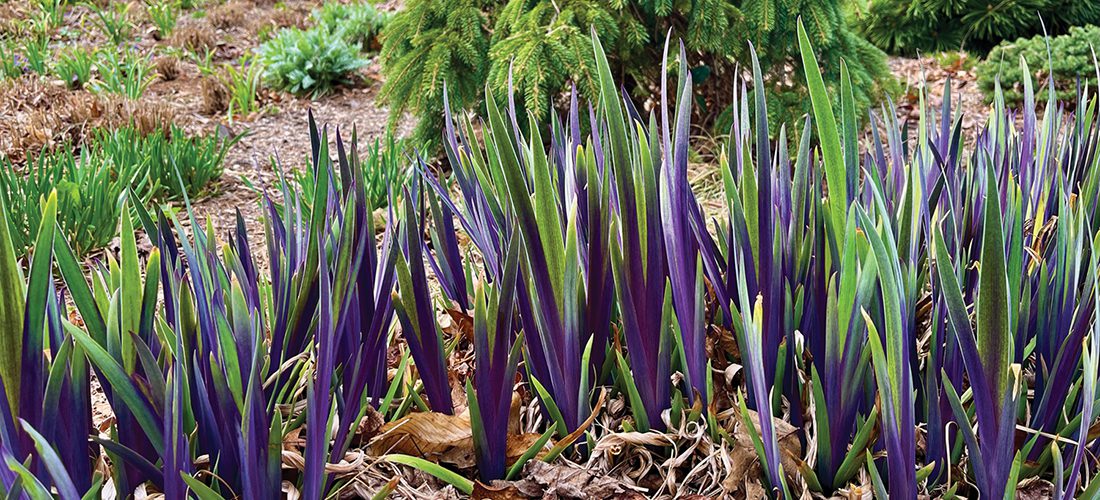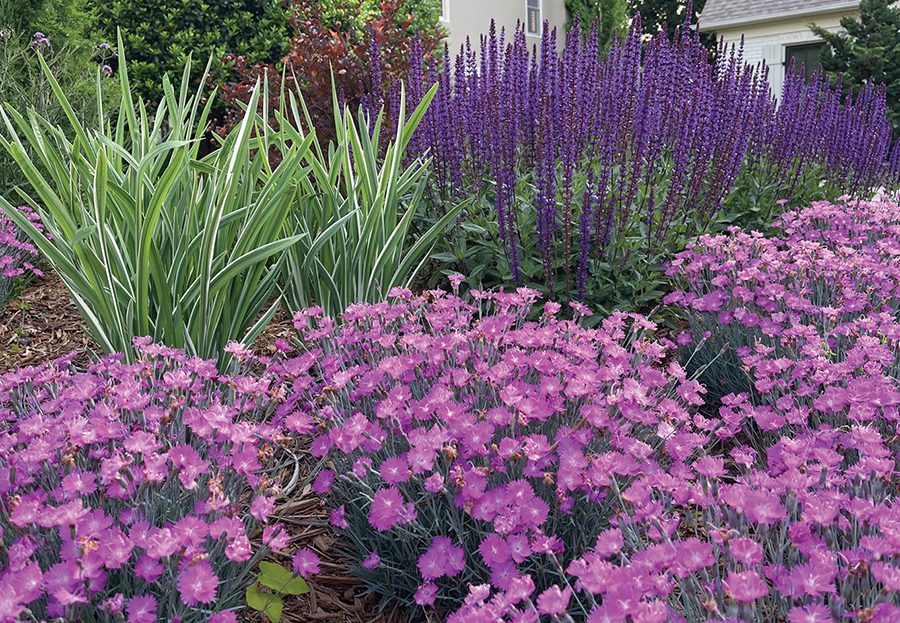Try these plant pairings in your garden
January 31, 2024

How sublime! Experimenting with different plant combinations can add drama, excitement and balance to the garden.
by Jay Sifford
February is all about pairing. Valentine’s Day celebrates the pairing of couples, whether they are complete opposites or very similar soul mates. We pair wine with food, deciding upon a non-oaky chardonnay with delicate fish or a hearty cabernet with a nicely marbled rib-eye.
The proper pairing of plants in your garden is just as important. Moving beyond the basic-but-essential gardening advice of pairing plants based upon similar light, soil and water requirements, certain plant combinations can propel your garden to the next level. Others will sidetrack its potential. Many of the most successful pairings move beyond specific plant recommendations. They instead focus on combinations that complement and contrast plants based on color, texture, size and shape. Here are some successful pairings and the reasoning behind them.
Add some sultry drama.
When at a party, it’s hard to miss the woman with that proverbial little black dress, perfectly complemented with bespoke jewelry and shoes. A bit of positive drama livens up a lackluster party. Similarly, a dramatic plant, properly sited, can add excitement to a mundane garden vignette. Consider adding some dark foliage to a bed filled with pastel flowers and foliage. While there are no true black flowers or leaves found in nature, dark purples or deep browns can fit the bill. Many ninebarks, Japanese maples, ajuga cultivars, heucheras and dahlias have dark foliage that bring drama to the garden. Because of the purple undertones of these plants, they work especially well paired with blues, purples and pinks. Companion plants could be blue ornamental grasses, purple salvias, and pink dianthus and echinaceas.
One of my favorite plants filled with seasonal drama is Iris versicolor ‘Purple Flame.’ When the leaves emerge in spring, the bottom half of the foliage is a brilliant purple, while the top half is a beautiful spring green. As hot weather arrives, the purple subsides, but seeing the new spring foliage is a seasonal highlight.


Left: A weeping Ryusen Japanese maple pairs well with an upright Thunderhead pine. Right: Sultry combination: ‘Black Scallop’ ajuga with blue atlas cedar.
Consider punctuation.
Just as punctuation brings order and emotion to a paragraph, employing certain plants can add rhythm and excitement to your garden. I’m guilty of planting large masses of ornamental grasses. The way they respond to wind in a kinetic way is mesmerizing and sensual. Peppering some companion plants into the mix can keep the vignette interesting. I particularly enjoy introducing blazing star (Liatris) and tall verbena (Verbena bonariensis) into these grassy masses. They act as exclamation marks, adding excitement and splashes of color while moving the eye through the space.
Contrast spiky and mounding.
Introduce some yin and yang into your garden bed by considering these shapes. Spiky is a happy shape — think of someone throwing their hands up in excitement. This shape contrasts a soft, tranquil mounding shape. Consider adding yucca, agave or variegated iris into a bed of mounding dianthus or sedums. Properly done, the result is sublime.

Introducing spiky foliage in a bed with softer, mounding plants creates interest and excitement.
Think directionally.
Up is not the only way. Consider planting a weeping tree such as a ‘Ryusen’ Japanese maple or ‘Cascade Falls’ bald cypress with a vertically growing conifer. The resulting juxtaposition will add excitement and animation to the garden bed. This result can also be attained by planting vertical ornamental grasses such as feather reed grasses (Calamagrostis) and some switchgrasses (Panicum) with very sculptural conifers such as weeping Norway spruces.
Pair different sizes.
Add another layer to your garden by juxtaposing foliage or overall plant sizes. Consider pairing delicate or dainty plants such as maidenhair fern, woodland phlox, club mosses or miniature hostas with plants sporting large foliage such as bigger hostas, Chinese mayapples or acanthus. Doing so will add instant yin-yang to the garden.
Give yourself permission to play with different combinations. Your garden is, after all, a stylized reflection of your personality. Much of gardening involves experimentation and trial and error. The end result can be a sublime pairing, much like that perfect cabernet with a well marbled steak. SP
Jay Sifford is a Charlotte-based landscape designer who specializes in contemporary, Asian and transitional gardens. His work has been featured in Southern Living, Country Gardens and Fine Gardening, as well as Houzz and several books.
Featured image: ‘Purple Flame’ iris adds drama to the spring garden.
